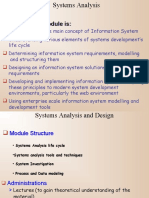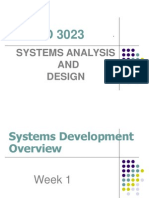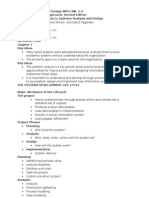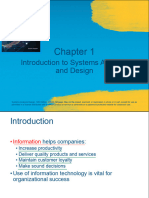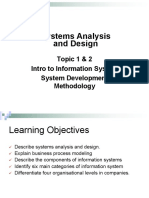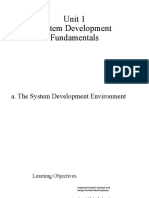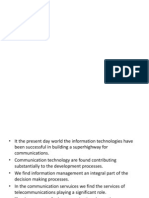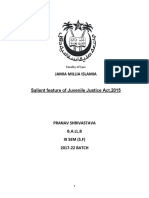0% found this document useful (0 votes)
60 views31 pages1 Systems Analysis Fundamentals
The document outlines the fundamentals of systems analysis and design, emphasizing the importance of information systems in modern organizations. It details various types of information systems, the systems development lifecycle, and methodologies such as object-oriented approaches. Additionally, it highlights the role of systems analysts in improving organizational processes and the significance of design in software development.
Uploaded by
Cassim JafferCopyright
© © All Rights Reserved
We take content rights seriously. If you suspect this is your content, claim it here.
Available Formats
Download as PDF, TXT or read online on Scribd
0% found this document useful (0 votes)
60 views31 pages1 Systems Analysis Fundamentals
The document outlines the fundamentals of systems analysis and design, emphasizing the importance of information systems in modern organizations. It details various types of information systems, the systems development lifecycle, and methodologies such as object-oriented approaches. Additionally, it highlights the role of systems analysts in improving organizational processes and the significance of design in software development.
Uploaded by
Cassim JafferCopyright
© © All Rights Reserved
We take content rights seriously. If you suspect this is your content, claim it here.
Available Formats
Download as PDF, TXT or read online on Scribd
/ 31

